Media
ARTstrology: Capricorn
December 22-January 19
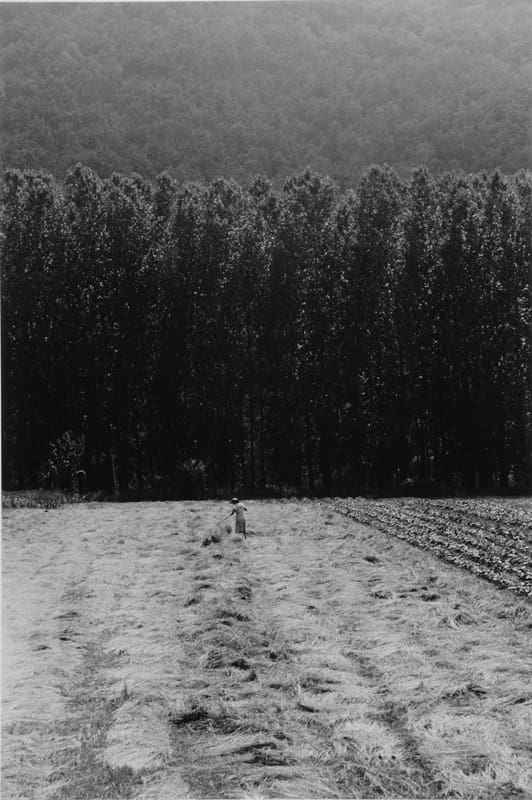
Working hard, or hardly working? You, tough Capricorn, fall in the first category. Capricorns don’t see problems, they see solutions. You have a tendency to be hyper focused on your goals, but don’t let that focus narrow your view. Take a step back and make sure you can see the forest for the trees.
Capricornio 22 diciembre – 19 enero
¿Trabajando duro o apenas trabajando? Tú, fuerte Capricornio, caes in la primera categoría. Los capricornianos no ven problemas, ven soluciones. Tienes una tendencia de ser hiperconcentrado en tus metas, pero no dejes que ese enfoque reduzca tu visión. Toma un paso para atrás y asegúrate ver la imagen completa.
ARTstrology is made possible with support the Henry V. and Frances W. Christenson Foundation
Read MoreFinish Strong: Our Favorites
We’ve been so busy making content this year, and we’ve shared so much. So we’re finishing this series strong by sharing our most popular resources.
![]() Research Mysteries from Quarantine: Part 1 shows how a collection mystery was solved. Museum staff explored Main Street, Cleveland by Ora Coltman and discovered a few interesting facts along the way.
Research Mysteries from Quarantine: Part 1 shows how a collection mystery was solved. Museum staff explored Main Street, Cleveland by Ora Coltman and discovered a few interesting facts along the way.
![]() #5WomenArtists at AAM showcases 5 pioneering women artists in the Museum’s collection. Each one of these talented artists’ works featured are currently on view in the galleries.
#5WomenArtists at AAM showcases 5 pioneering women artists in the Museum’s collection. Each one of these talented artists’ works featured are currently on view in the galleries.
![]() Fashion Finds explores fashion-forward outfits featured in the Museum’s collection. Learn more about each artwork and all of the trends that are fit for the runway.
Fashion Finds explores fashion-forward outfits featured in the Museum’s collection. Learn more about each artwork and all of the trends that are fit for the runway.
![]() #TryThis: Shaving Cream Marbling offers a way to get creative with shaving cream and other household items. This shaving cream project is easy to do, and the finished product is truly something to marvel at.
#TryThis: Shaving Cream Marbling offers a way to get creative with shaving cream and other household items. This shaving cream project is easy to do, and the finished product is truly something to marvel at.
![]() What’s in a label provides an inside look into what museum labels consist of and how they are made. Learn how the label for Elliot Torrey’s painting Surf was created.
What’s in a label provides an inside look into what museum labels consist of and how they are made. Learn how the label for Elliot Torrey’s painting Surf was created.
![]() Artful Interiors explores some of the spaces shown in artists’ work in the Museum’s collection. We’ve all gotten very familiar with the inside of our homes the last few months, take a look at these ones for some new interior views.
Artful Interiors explores some of the spaces shown in artists’ work in the Museum’s collection. We’ve all gotten very familiar with the inside of our homes the last few months, take a look at these ones for some new interior views.
![]() #TryThis: Pipecleaner Prints teaches viewers how to make their own prints with household materials. The only materials required are paper, cardboard, pipe cleaners, and ink to make unique prints at home.
#TryThis: Pipecleaner Prints teaches viewers how to make their own prints with household materials. The only materials required are paper, cardboard, pipe cleaners, and ink to make unique prints at home.
![]() 5 People on your Zoom Call describes what your work video call might look like if your co-workers were artworks from the Museum’s collection. See if you spot any familiar characters.
5 People on your Zoom Call describes what your work video call might look like if your co-workers were artworks from the Museum’s collection. See if you spot any familiar characters.
![]() ARTstrology posts go up each month and they relate a horoscope to a work of art in the collection. If you’re a Sagittarius, see whether this work of art is spot on for you.
ARTstrology posts go up each month and they relate a horoscope to a work of art in the collection. If you’re a Sagittarius, see whether this work of art is spot on for you.
![]() Research Mysteries from Quarantine: Part 2 explores Bookstalls Along Seine, a print by T. Frank Simon. Museum staff take a deep dive into this print as they try to find an answer to the question, ‘Who?’ in this case of mistaken identity.
Research Mysteries from Quarantine: Part 2 explores Bookstalls Along Seine, a print by T. Frank Simon. Museum staff take a deep dive into this print as they try to find an answer to the question, ‘Who?’ in this case of mistaken identity.
Downloadable Chess Set
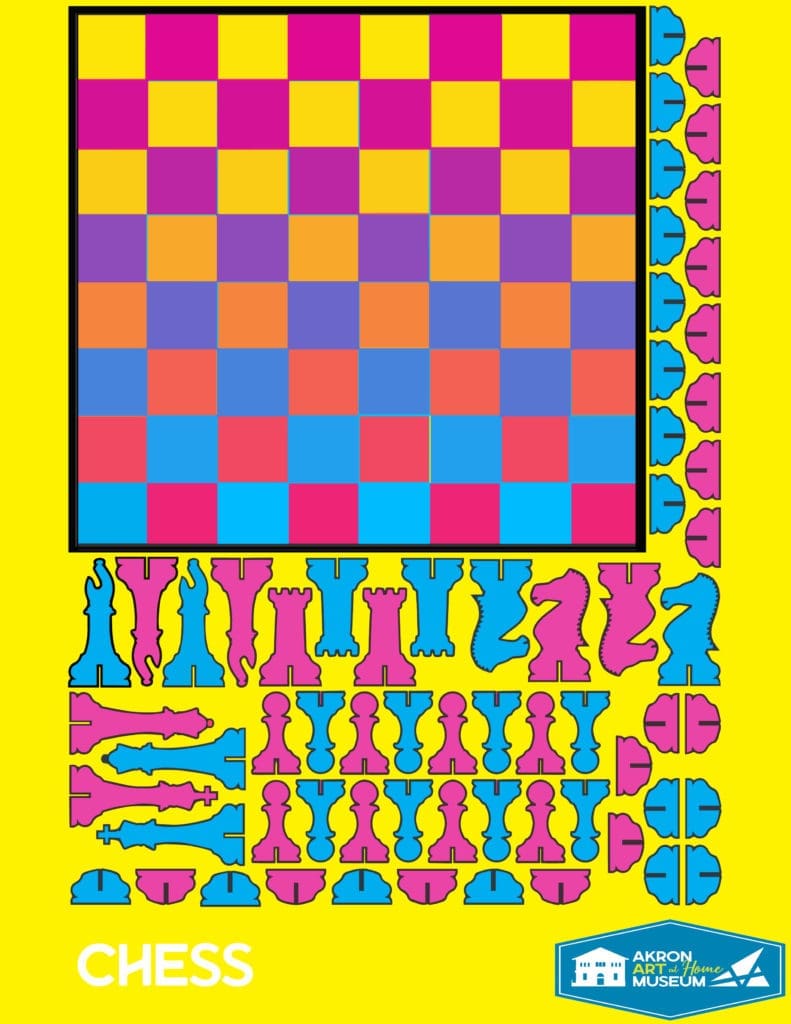
Grids and squares are instrumental elements of many of our works of art. Inspired by the ways artists mix colors, we made this simple downloadable mini-chess set. Enjoy a colorful holiday.
Read MoreIsland of Misfit Toys- at Home!
Happy December, everyone. For over a decade, the museum has hosted the annual Island of Misfit Toys event in December. During this fun-filled, festive day, we take broken, well-loved toys, smash them to bits, then reassemble them into wacky, wonderful sculptures. It is one of our favorite days of the year. The creatures and structures that come out of the workshop are covered in googly eyes, sparkles, doll arms, and are bursting with creativity.
While we can’t all get together this year to build our misfit toys masterpieces, we do have some ideas on how you could bring this tradition home. Here are a few simple project ideas you could create with the whole family.
First up, using toys as tools. There are many a broken toy lying around my house these days. Instead of being tossed in the trash, they can be transformed into painting tools. Simply gather whatever you have lying around that you don’t mind getting a bit messy. You’ll also need paper and paint.
Use the broken toy pieces as brushes or stamps by dipping them into the paint and then dragging, dotting, and stamping them onto the paper.
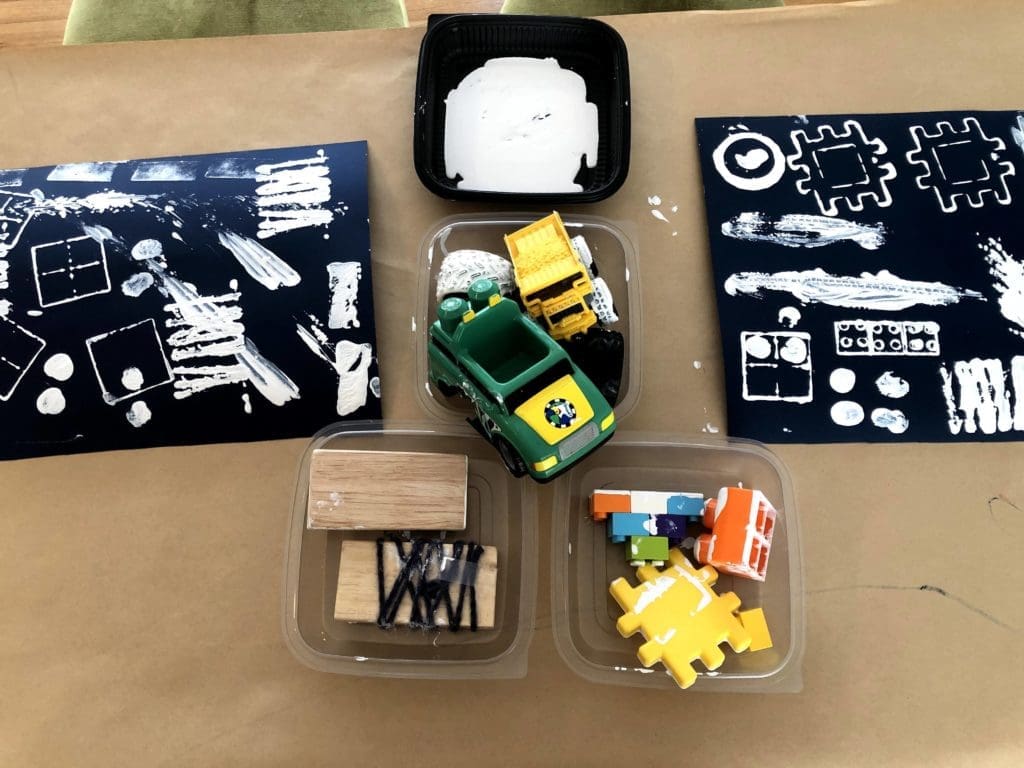
Finish Strong with Music
Music is a regular part of the Akron Art Museum’s program calendar, with Downtown at Dusk and the Family Concert in the summer and Midwinter Blues and Other Tunes in February. This year, we’ve had to enjoy music in new digital ways. Explore some of the ways we’re enjoying music now.
Many of our artworks connect to music:
![]() In Revery by Thelma Frazier Winter, a young woman is lost in the song she plays. What do you think she’s performing?
In Revery by Thelma Frazier Winter, a young woman is lost in the song she plays. What do you think she’s performing?
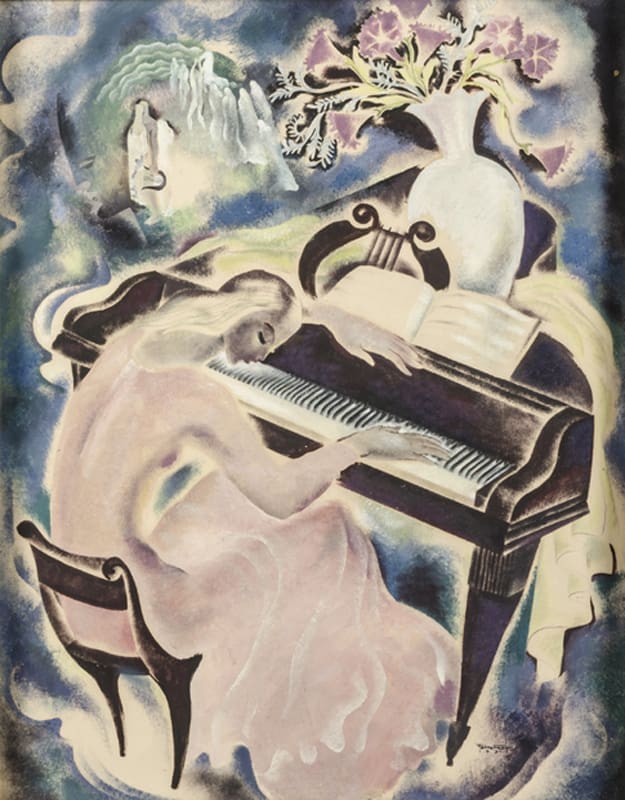
![]() Pablo Picasso’s Femme Couchée et Guitariste shows a reclining woman strumming away. Playing music for fun is a great way to relax.
Pablo Picasso’s Femme Couchée et Guitariste shows a reclining woman strumming away. Playing music for fun is a great way to relax.
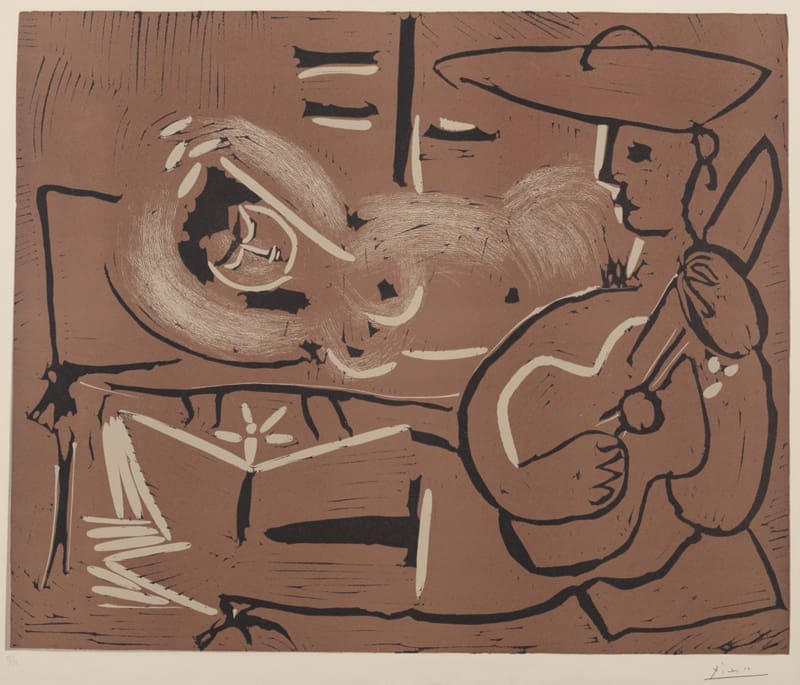
![]() Herman Leonard photographed many musicians, including James Moody. Imagine what sounds will come out of the saxophone, when he puts it to his lips.
Herman Leonard photographed many musicians, including James Moody. Imagine what sounds will come out of the saxophone, when he puts it to his lips.
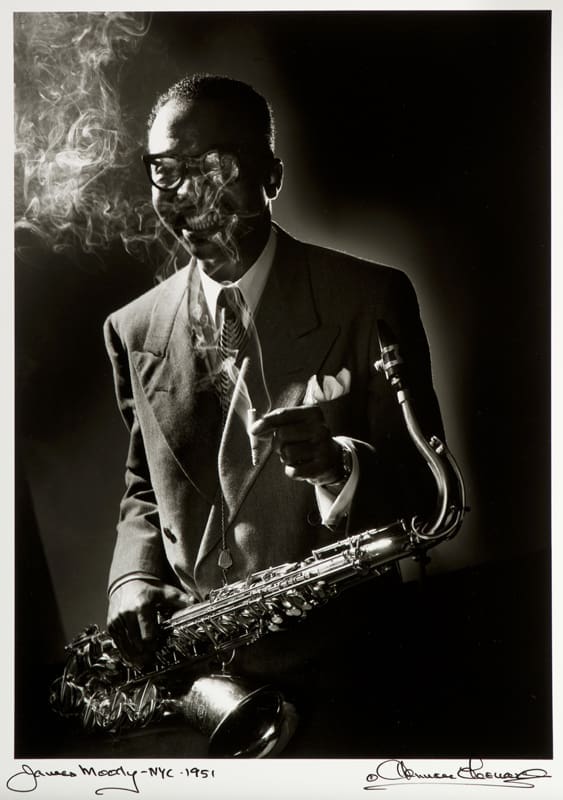
![]() Many of us are missing seeing live music. Pictures like Leonard’s of the Royal Festival Hall remind us why we’re isolating and what we have to look forward to.
Many of us are missing seeing live music. Pictures like Leonard’s of the Royal Festival Hall remind us why we’re isolating and what we have to look forward to.
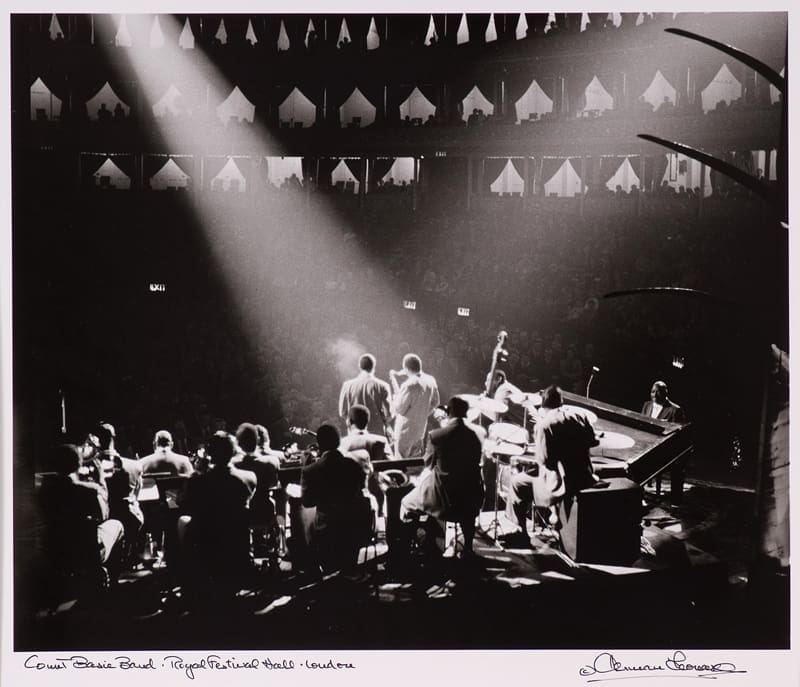
This year has meant the performances had to go digital. While we missed the chance to be together, it does mean you can enjoy these tunes whenever and wherever.
![]() Downtown at Dusk: Sammy DeLeon brings us music that gets us on our feet and ready to dance. As one of Northeast Ohio’s most recognized bandleaders, DeLeon and sextet perform Latin Jazz sounds like you’ve never heard them before.
Downtown at Dusk: Sammy DeLeon brings us music that gets us on our feet and ready to dance. As one of Northeast Ohio’s most recognized bandleaders, DeLeon and sextet perform Latin Jazz sounds like you’ve never heard them before.
![]() Downtown at Dusk: Curtis Taylor’s lyrical and improvisational style demands attention. This award-winning trumpeter and Bedford native brings us feel-good jazz music for any occasion.
Downtown at Dusk: Curtis Taylor’s lyrical and improvisational style demands attention. This award-winning trumpeter and Bedford native brings us feel-good jazz music for any occasion.
![]() Downtown at Dusk: Timi Funk is an Akron native, a songstress, and frontwoman for many different music projects. She brings us an impressive vocal range and Neo-Soul/Blues beats that are sure to set the mood for a good evening.
Downtown at Dusk: Timi Funk is an Akron native, a songstress, and frontwoman for many different music projects. She brings us an impressive vocal range and Neo-Soul/Blues beats that are sure to set the mood for a good evening.
![]() Downtown at Dusk: The 15 60 75 Numbers Band has been praised by almost every national music publication and several international publications. Expect nothing short of excellent from this group’s performance.
Downtown at Dusk: The 15 60 75 Numbers Band has been praised by almost every national music publication and several international publications. Expect nothing short of excellent from this group’s performance.
The music will continue throughout the winter.
![]() Missile Toe is said to be the best Christmas band ever. You get two chances to enjoy them in December, in AAM After Work: The Holiday Variety Show on December 16, and the Holiday Concert with Missile Toe on December 19. Both events will be streamed on the Museum’s Facebook page and YouTube channel from 6:30–8:00pm.
Missile Toe is said to be the best Christmas band ever. You get two chances to enjoy them in December, in AAM After Work: The Holiday Variety Show on December 16, and the Holiday Concert with Missile Toe on December 19. Both events will be streamed on the Museum’s Facebook page and YouTube channel from 6:30–8:00pm.
![]() Join us for Midwinter Blues and Other Tunes in February. The Akron Art Museum’s annual winter concert series, Midwinter Blues & Other Tunes showcases local talents in music, visual art, and organizations in Northeast Ohio. Each of the last 3 weeks in February will feature a community partner, a visual artist, and two musical acts surrounding a theme. The Museum has partnered with Akron Recording Company to pre-record 6 musical performances in the Haslinger Galleries—giving you a taste of the Museum wherever you may be! Midwinter Blues will be streamed on the Museum’s YouTube and social media pages.
Join us for Midwinter Blues and Other Tunes in February. The Akron Art Museum’s annual winter concert series, Midwinter Blues & Other Tunes showcases local talents in music, visual art, and organizations in Northeast Ohio. Each of the last 3 weeks in February will feature a community partner, a visual artist, and two musical acts surrounding a theme. The Museum has partnered with Akron Recording Company to pre-record 6 musical performances in the Haslinger Galleries—giving you a taste of the Museum wherever you may be! Midwinter Blues will be streamed on the Museum’s YouTube and social media pages.
Making Your Mark
Realism is often a sticking point for viewers. “My kid can do that” is a refrain heard in many galleries. Working artists usually have a well-honed ability to render life realistically, but some of them choose to diverge from that representational approach. Seemingly simple works, bare squiggles on paper, require incredible control of a brush or careful cajoling of a monoprint plate.
The new exhibition Making Your Mark offers a panoply of fine craftsmanship. Included are works by nine regional artists, individuals employing their craft to engage our community. Many of the artists employ everyday tools to accomplish extraordinary results. From scraps of fabric to an X-Acto knife or crayons, the artists have crafted their own styles to express their unique visions. You can explore the works, along with the artists’ tools, in our online exhibition.
Read MoreMake Your Own Museum Game
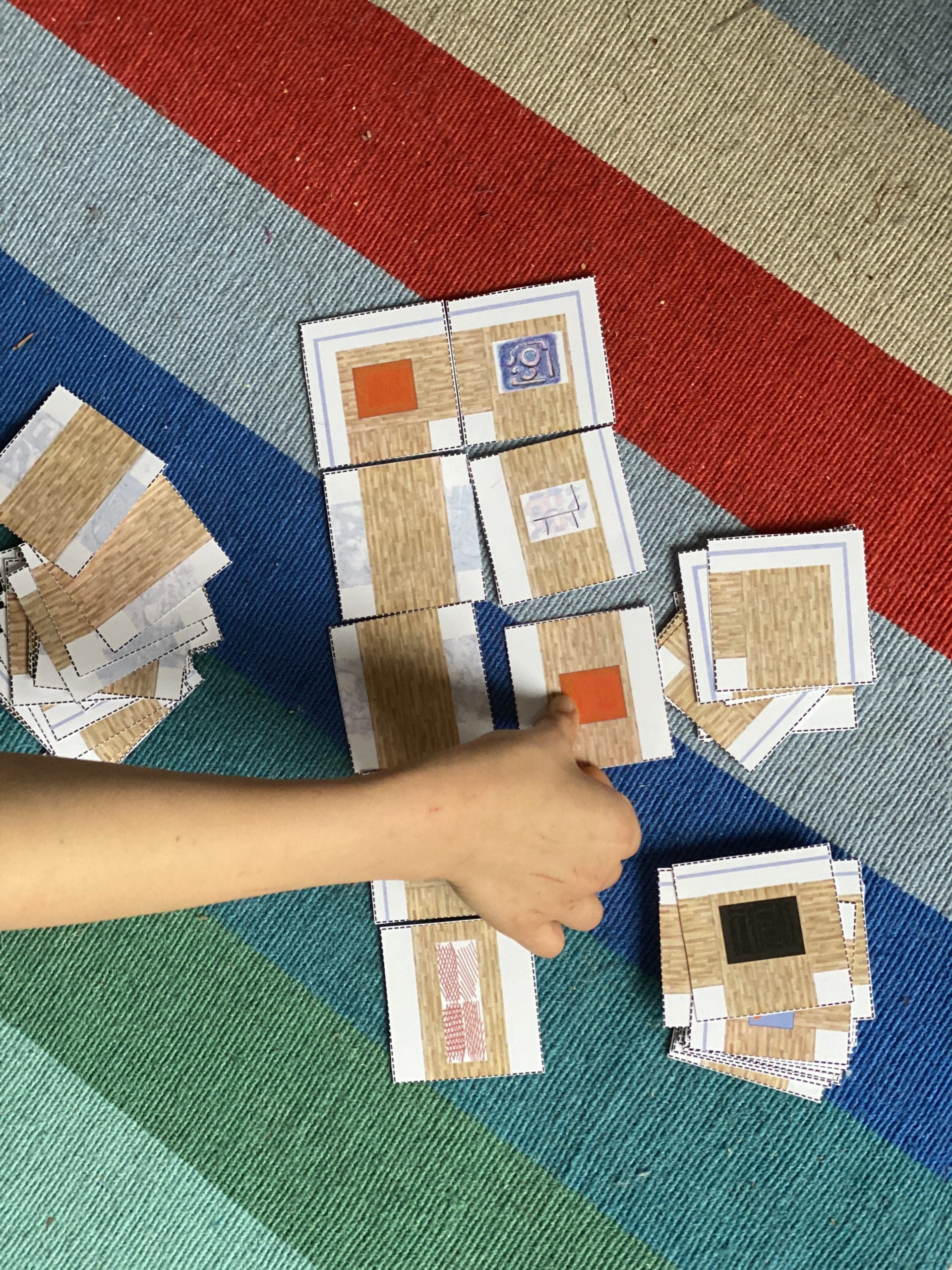
As a holiday gift, we’re passing on a free tile-laying game for 2 to 5 players. Players pull 15 tiles from a bowl of tiles. The first person to be rid of all their tiles, wins. Download and print the game on hard stock.
On their turn, each player adds a tile:
- Marble floors connect to marble floors.
- Wood floors connect to wood floors.
- Floors cannot go through walls.
If you can’t make a move, you need to pull a tile.
Read MoreAnimal Abstraction
Feeling a bit stuck? Need a diversion? Your pets can be a source of creativity. No pet? What about your plants? Yourself? Anything can be the start of an abstract masterpiece.
Most phones allow you to change the colors of images and draw on pictures. Can you create an abstract masterpiece from an image of your pet? Post your best creations and tag us @akronartmuseum #animalabstraction
Here are some samples to get you thinking.
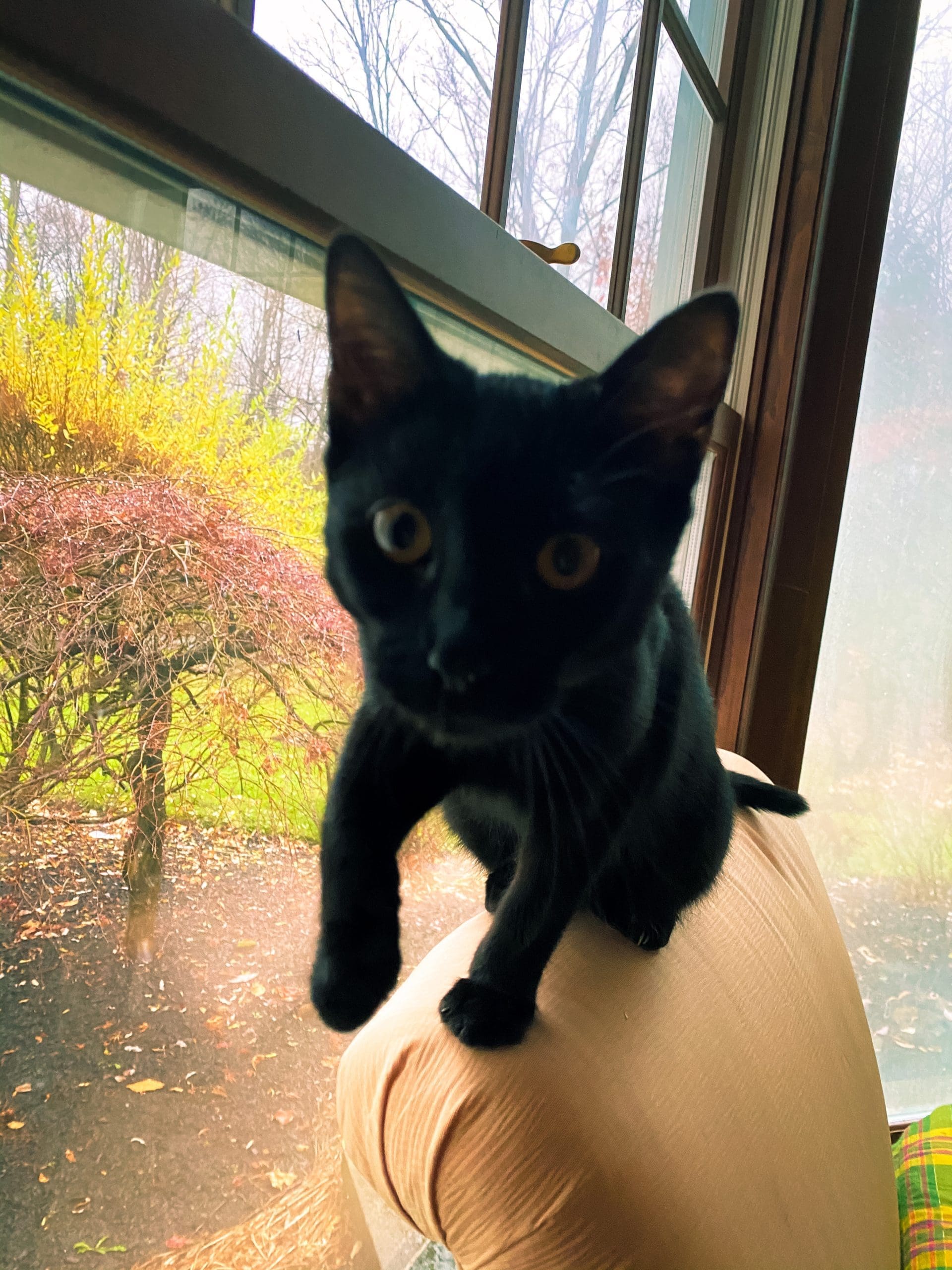
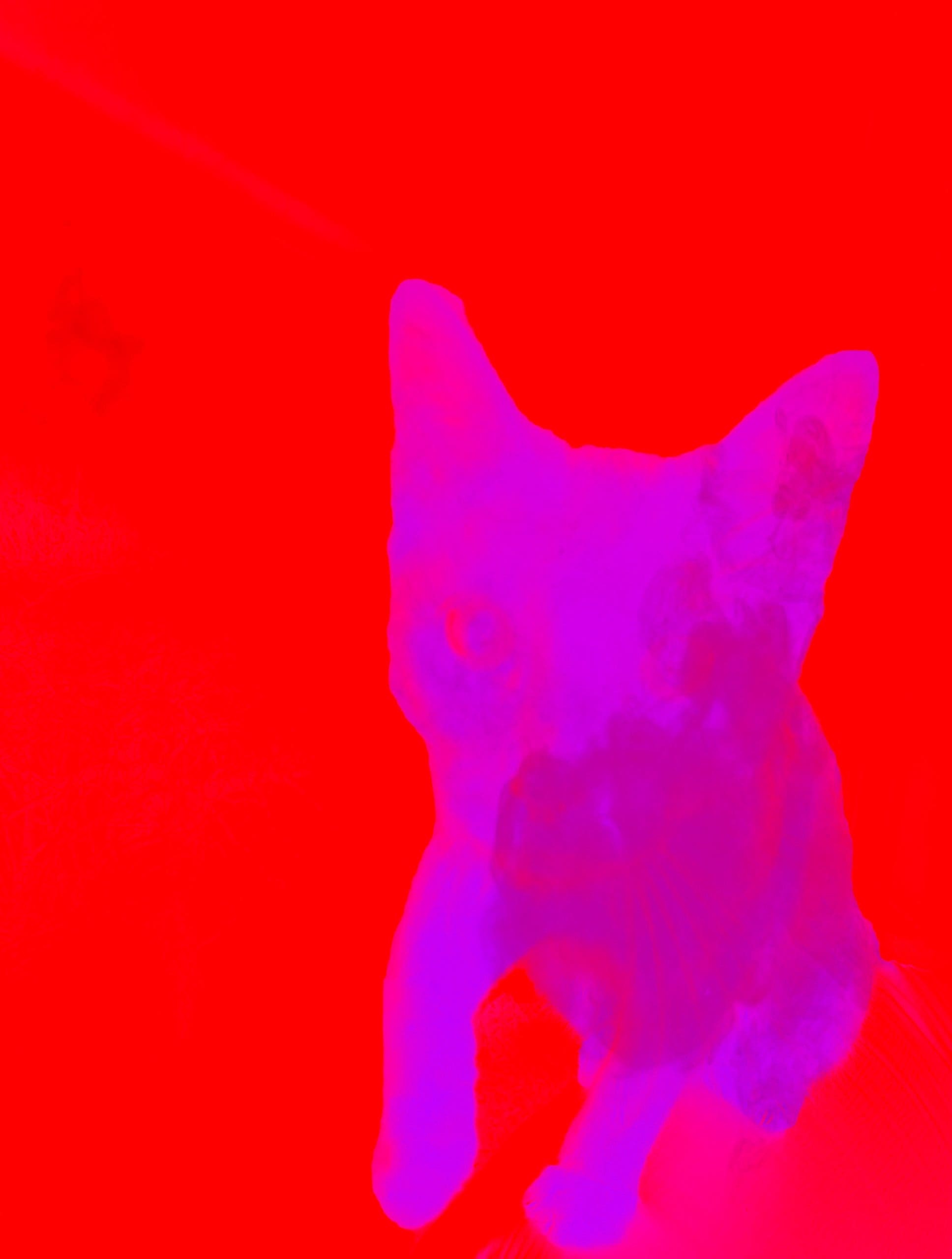
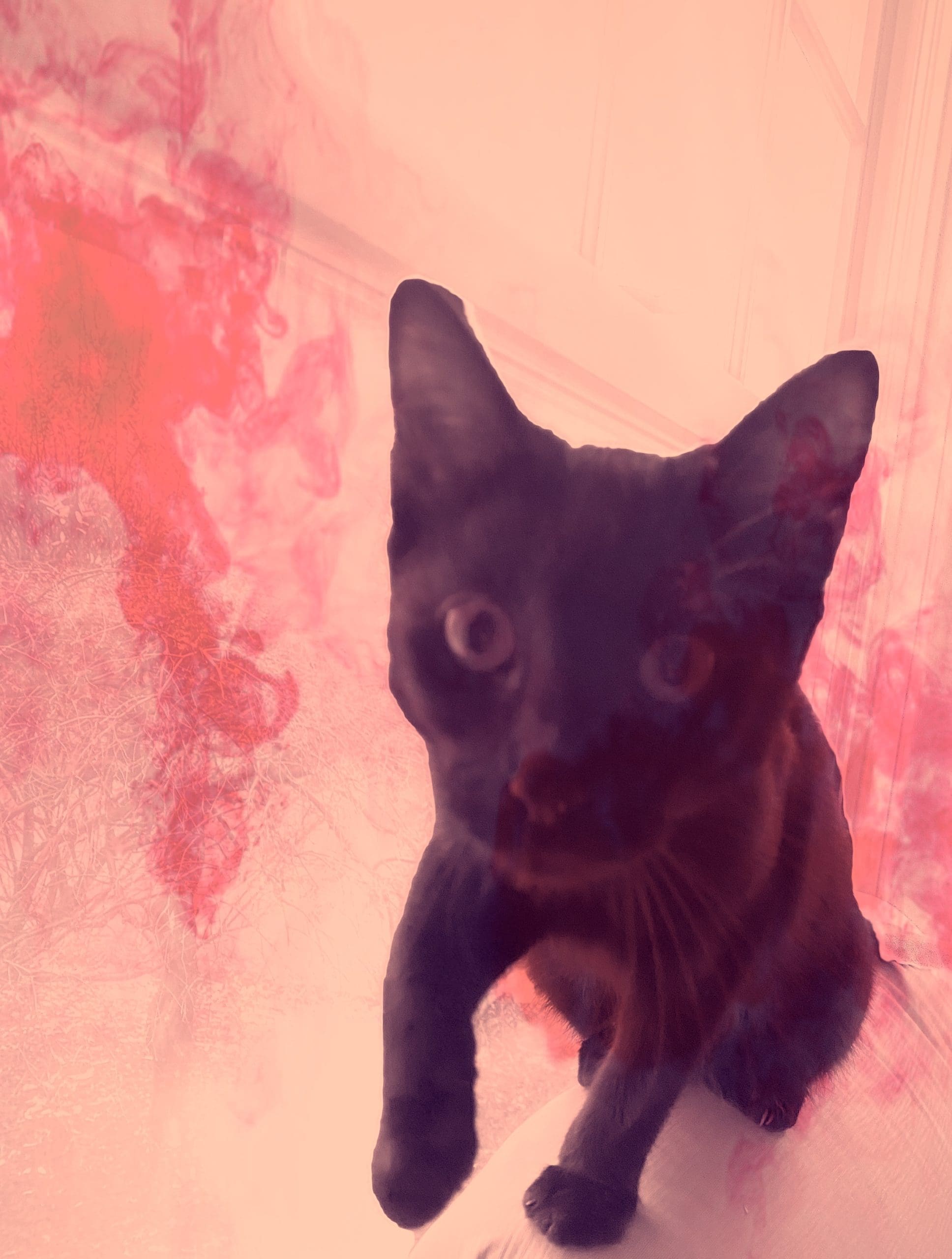
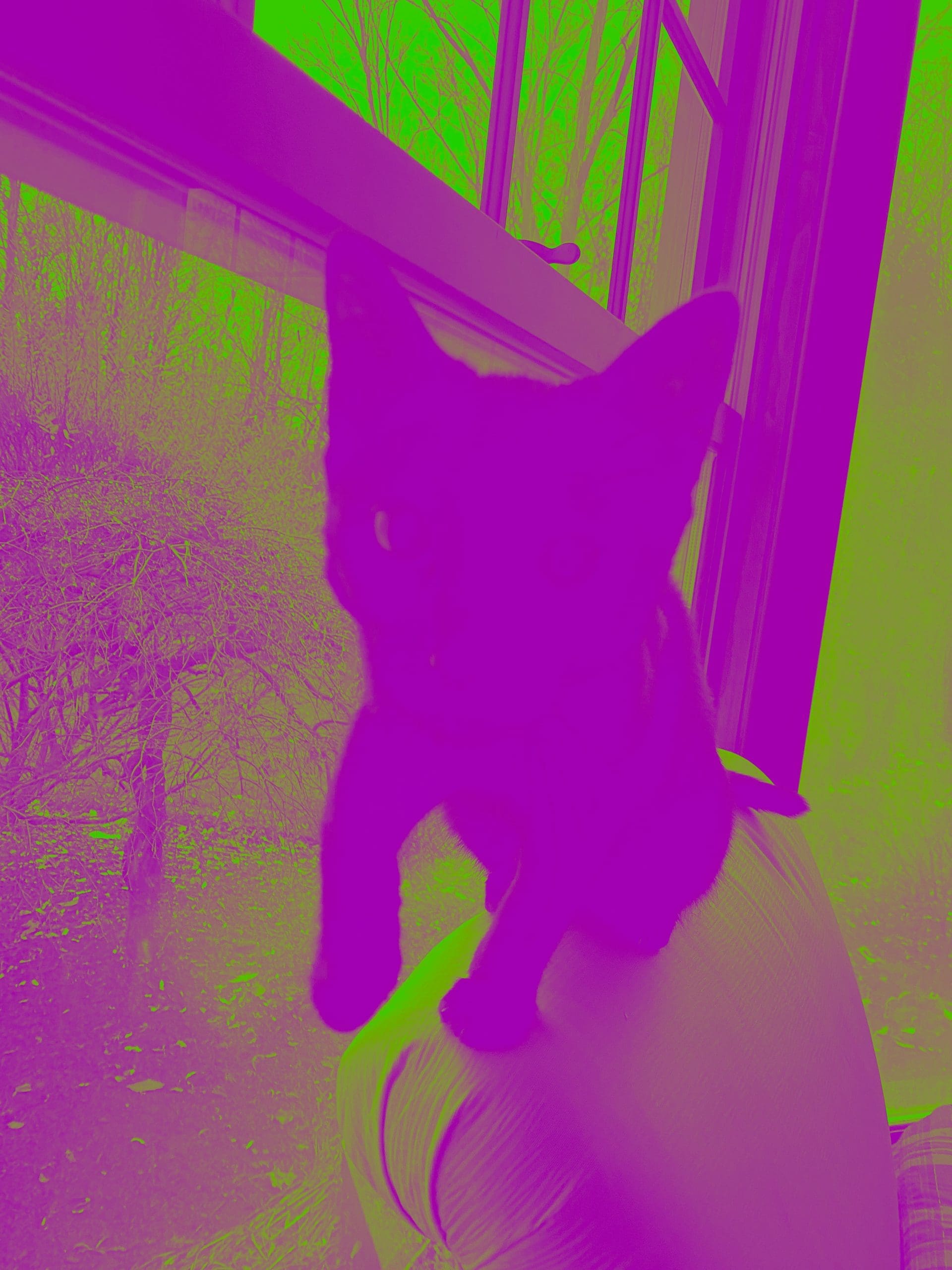
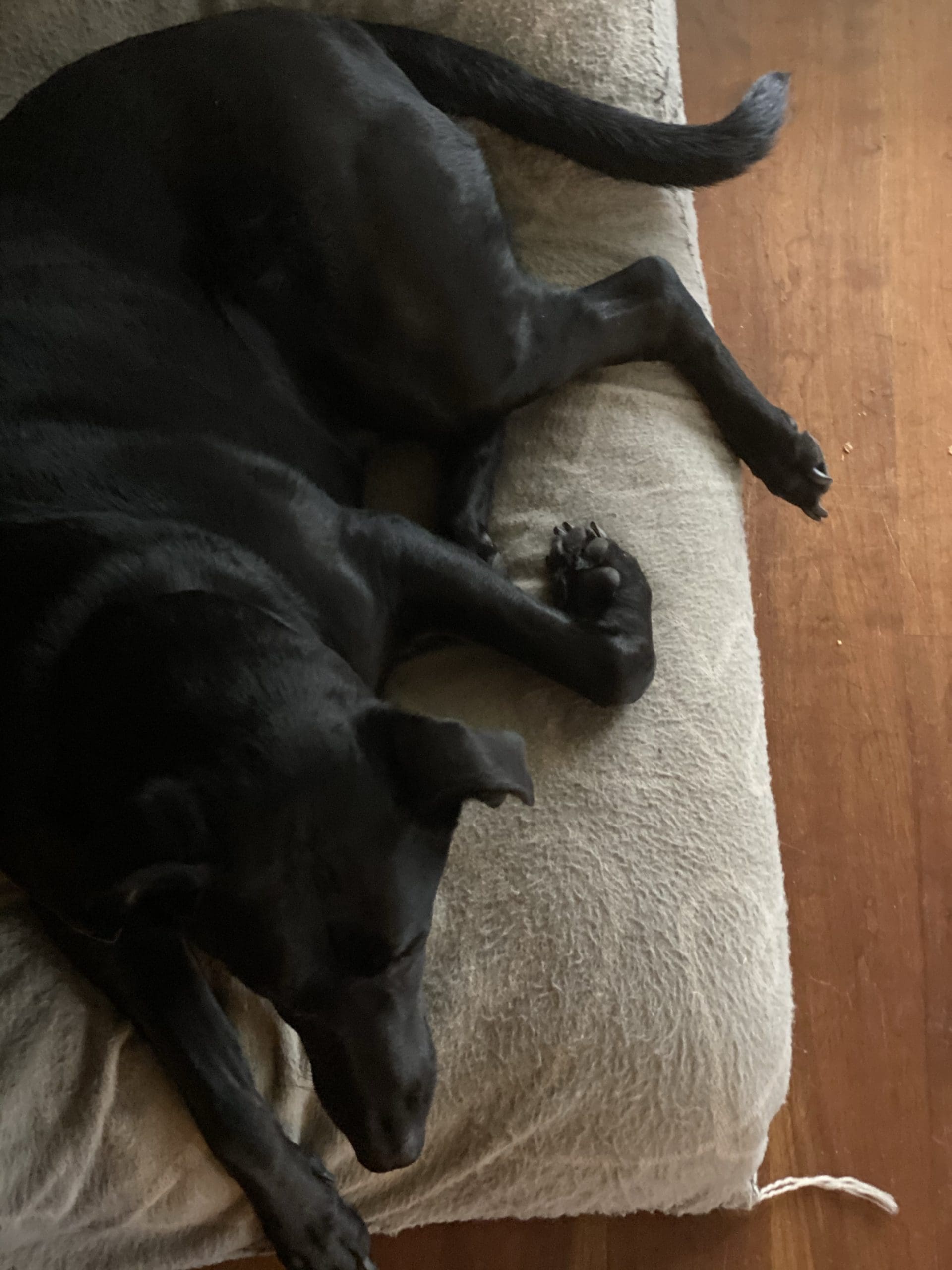
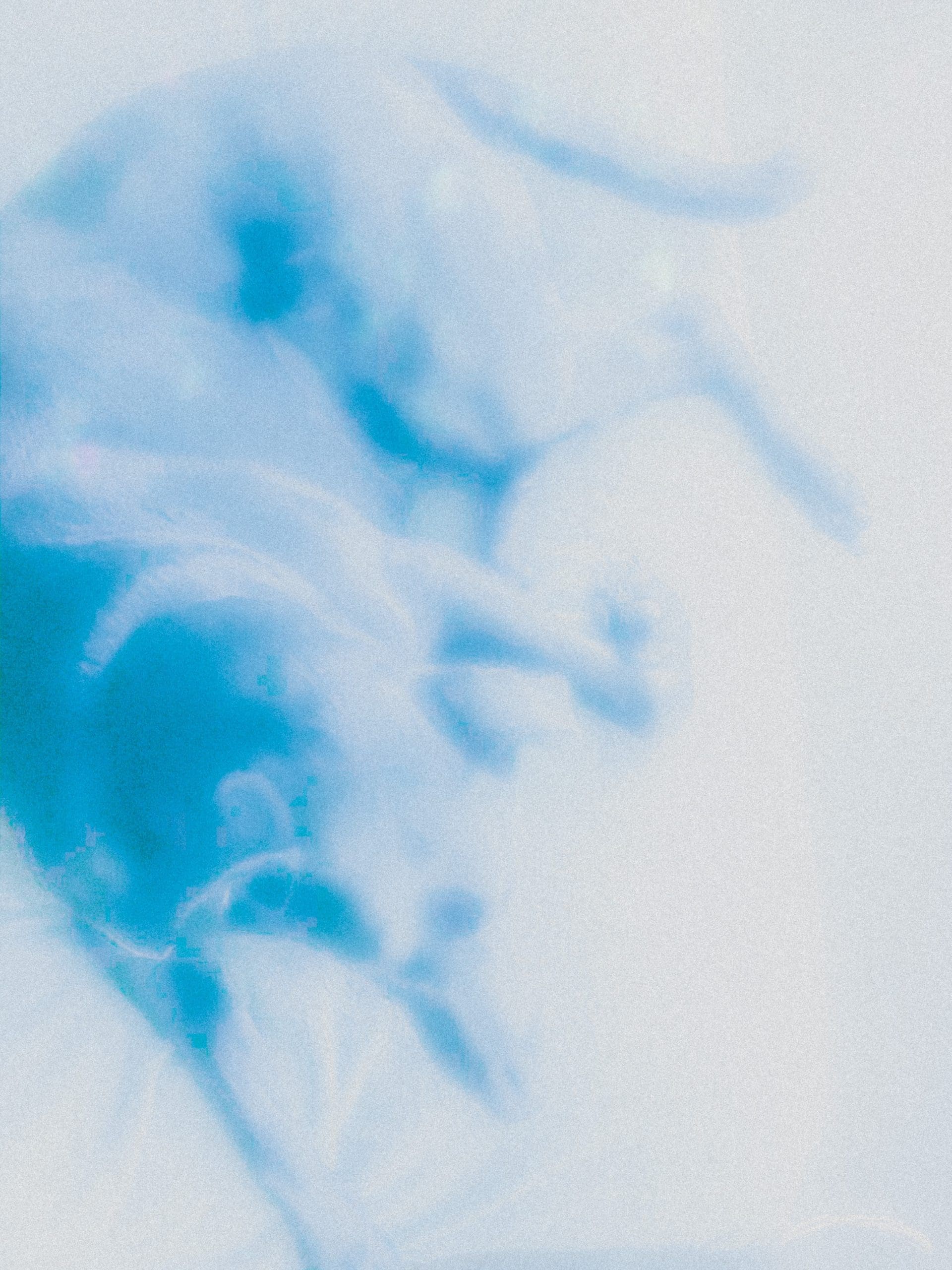
10 Local Writers to Explore
This fall, the Museum commissioned ten writers to be inspired by the Museum’s collection for a piece of microfiction. These writings were then used as the source for a series of postcards used in the Akron Art Mail installation. Some of these writers were also featured in On Process, the Museum’s speaker series which highlights artists and writers and their interviews are available to watch on our YouTube channel. Explore these ten writers along with their written works and Akron Art Mail postcards featured on the Museum’s website..
![]() Theron Brown is a professor of Jazz Piano at Kent State University and a resident of Akron, Ohio. He is immensely involved in promoting jazz music and the arts and he is the founder of the Rubber City Jazz & Blues Festival. For more information on Theron, watch his On Process interview.
Theron Brown is a professor of Jazz Piano at Kent State University and a resident of Akron, Ohio. He is immensely involved in promoting jazz music and the arts and he is the founder of the Rubber City Jazz & Blues Festival. For more information on Theron, watch his On Process interview.
![]() Philip Metres is the author of ten books, including Shrapnel Maps (2020) and The Sound of Listening: Poetry as Refuge and Resistance (2018). He is professor of English and director of the Peace, Justice, and Human Rights program at John Carroll University. Watch his On Process interview for more information about his work.
Philip Metres is the author of ten books, including Shrapnel Maps (2020) and The Sound of Listening: Poetry as Refuge and Resistance (2018). He is professor of English and director of the Peace, Justice, and Human Rights program at John Carroll University. Watch his On Process interview for more information about his work.
![]() Thrity Umrigar is the best-selling author of the novels Bombay Time, The Space Between Us, If Today Be Sweet, The Weight of Heaven, The World We Found, and The Story Hour. She is a Distinguished University Professor of English at Case Western Reserve University in Cleveland.
Thrity Umrigar is the best-selling author of the novels Bombay Time, The Space Between Us, If Today Be Sweet, The Weight of Heaven, The World We Found, and The Story Hour. She is a Distinguished University Professor of English at Case Western Reserve University in Cleveland.
![]() David Hassler is the author or editor of nine books of poetry and nonfiction. He directs the Wick Poetry Center at Kent State University. His play, May 4th Voices: Kent State, 1970, was produced in 2020 as a national radio play by the WKSU NPR station. For more information on David, watch his On Process interview.
David Hassler is the author or editor of nine books of poetry and nonfiction. He directs the Wick Poetry Center at Kent State University. His play, May 4th Voices: Kent State, 1970, was produced in 2020 as a national radio play by the WKSU NPR station. For more information on David, watch his On Process interview.
![]() Joanna Wilson draws upon her academic background in film history and philosophy to create insightful commentary on television, movies, and popular culture. She is the author of four books on Christmas entertainment. Watch her On Process interview for more information about her work.
Joanna Wilson draws upon her academic background in film history and philosophy to create insightful commentary on television, movies, and popular culture. She is the author of four books on Christmas entertainment. Watch her On Process interview for more information about her work.
![]() Holly Christensen is an award-winning columnist at the Akron Beacon Journal and teaches writing at the University of Akron. She’s currently working on her memoir, Becoming the Mother I Wanted.
Holly Christensen is an award-winning columnist at the Akron Beacon Journal and teaches writing at the University of Akron. She’s currently working on her memoir, Becoming the Mother I Wanted.
![]() Dr. Mary E. Weems is an accomplished author, poet, playwright, and social and cultural foundations scholar. She has authored thirteen books and her plays and excerpts have been published or produced for nearly two decades. For more information on Dr. Mary Weems, watch her On Process interview.
Dr. Mary E. Weems is an accomplished author, poet, playwright, and social and cultural foundations scholar. She has authored thirteen books and her plays and excerpts have been published or produced for nearly two decades. For more information on Dr. Mary Weems, watch her On Process interview.
![]() Brad Warner grew up in Akron, Ohio and Nairobi, Kenya. He is the author of Letters to a Dead Friend About Zen, Hardcore Zen, and several other books. Watch his On Process interview for more information about his work.
Brad Warner grew up in Akron, Ohio and Nairobi, Kenya. He is the author of Letters to a Dead Friend About Zen, Hardcore Zen, and several other books. Watch his On Process interview for more information about his work.
![]() Hanif Abdurraqib is a poet, essayist, and cultural critic from Columbus, Ohio. His collection of essays, They Can’t Kill Us Until They Kill Us, was released in 2017 and was named a book of the year by multiple publications including Buzzfeed, Esquire, NPR, Oprah Magazine, The Los Angeles Review, and The Chicago Tribune.
Hanif Abdurraqib is a poet, essayist, and cultural critic from Columbus, Ohio. His collection of essays, They Can’t Kill Us Until They Kill Us, was released in 2017 and was named a book of the year by multiple publications including Buzzfeed, Esquire, NPR, Oprah Magazine, The Los Angeles Review, and The Chicago Tribune.
![]() Mary Biddinger is a writer, editor, and professor who lives in Akron, Ohio. Her poems have recently appeared in Court Green, The Laurel Review, Poetry, Southern Indiana Review, and Sugar House Review, and her prose is forthcoming in On the Seawall.
Mary Biddinger is a writer, editor, and professor who lives in Akron, Ohio. Her poems have recently appeared in Court Green, The Laurel Review, Poetry, Southern Indiana Review, and Sugar House Review, and her prose is forthcoming in On the Seawall.
Akron Art Mail is made possible with the generous support from the Huntington-Akron Foundation with additional support from the John S. and James L. Knight Foundation, the Ohio Arts Council, and the Kenneth L. Calhoun Charitable Trust, KeyBank, Trustee.

Drawing Game–Art Dice
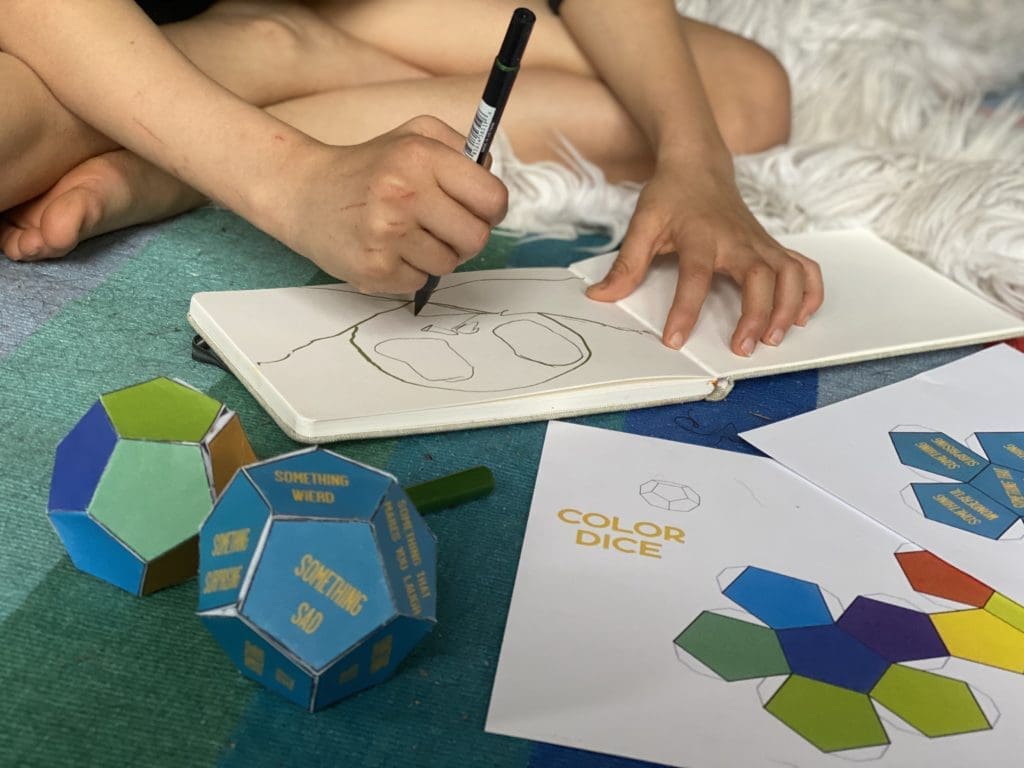
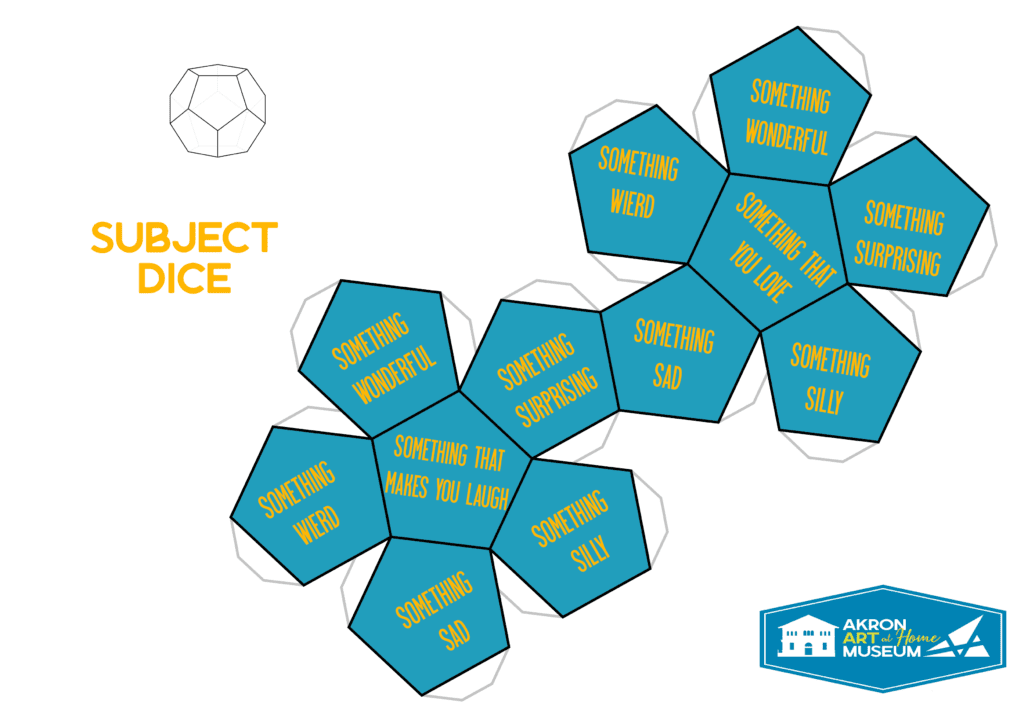
Drawing can feel scary. This game helps you loosen up your style or just have fun.
How do you play?
- Print out the three dice. Fold and glue them together.
- Grab some colored pencils or markers.
- Find a few sheets of paper.
- Roll the dice.
- DRAW.
- If you’re with a friend, guess what they drew. OR Challenge them to draw something
MuseumGames are made possible by PNC with additional support from Acme Fresh Market, the Kathy Moses Salem Philanthropic Fund of the Akron Community Foundation, The R.C. Musson and Katharine M. Musson Charitable Foundation, the Robert O. and Annamae Orr Family Foundation, and the Charles E. and Mabel M. Ritchie Foundation.


